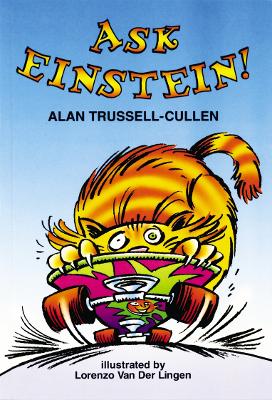This book contains the following story:

How I Met Einstein: A Character Comes to Life
No. of pages 32
Published: 2003
Add this book to your 'I want to read' list!
By clicking here you can add this book to your favourites list. If it is in your School Library it will show up on your account page in colour and you'll be able to download it from there. If it isn't in your school library it will still show up but in grey - that will tell us that maybe it is a book we should add to your school library, and will also remind you to read it if you find it somewhere else!
This book features in the following series: Skyracer Green, Skyrider Green .
There are 32 pages in this book. This book was published in 2003 by HarperCollins Publishers .
This book features the following character:
Albert Einstein
Albert Einstein (18791955) was a German-born theoretical physicist widely regarded as one of the most influential and groundbreaking scientists of the 20th century. He is best known for developing the theory of relativity, particularly the equation E = mc, which describes the relationship between energy (E), mass (m), and the speed of light (c). This equation became a foundational principle in modern physics. Major Contributions included: (I) Theory of Relativity: Special Relativity (1905): This theory revolutionized the understanding of time and space, proposing that the laws of physics are the same for all observers in uniform motion, and that the speed of light is constant, regardless of the observer's motion.(ii) General Relativity (1915): Expanding on special relativity, Einstein proposed that gravity is not a force between masses but a curvature in space-time caused by the presence of mass and energy. This theory predicted phenomena such as the bending of light by gravity, which was confirmed during a solar eclipse in 1919, catapulting Einstein to worldwide fame. (iii) Photoelectric Effect: In his paper on the photoelectric effect, Einstein showed that light can behave as both a wave and a particle (later called photons). This was a key development in quantum theory and contributed to the early foundations of quantum mechanics. (iv) Brownian Motion: Einstein's work on Brownian motion provided evidence for the existence of atoms and molecules, further advancing the field of statistical mechanics.




